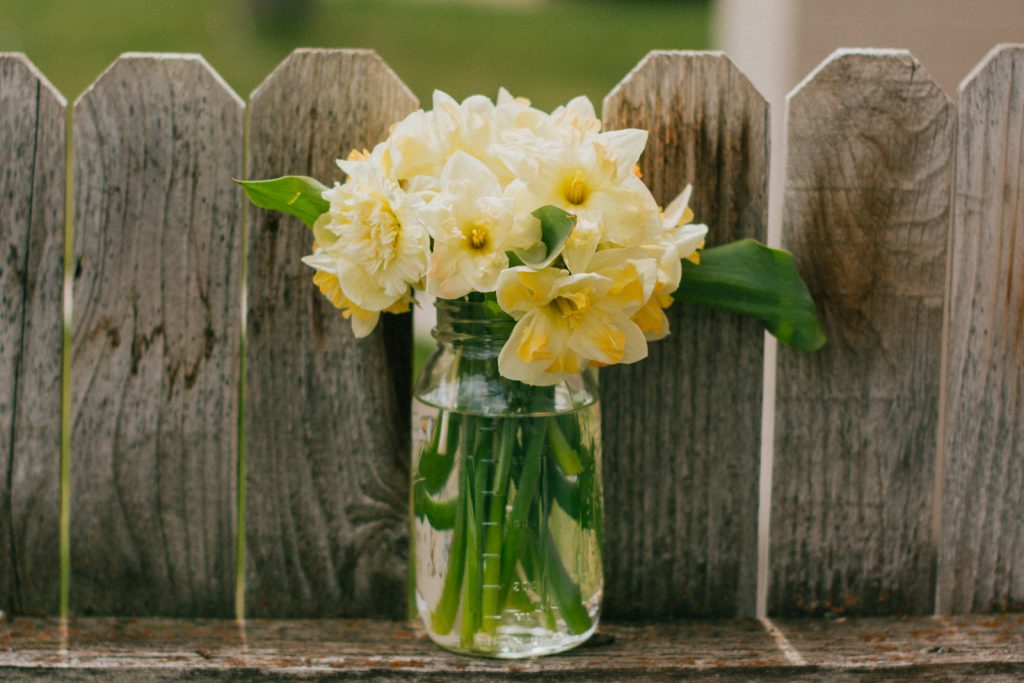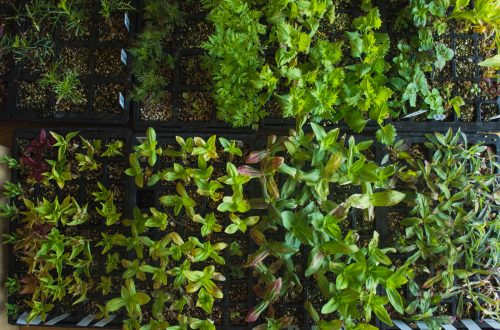
If you’re trying to plan a cut flower garden or flower farm in Utah and wonder what kinds of blooms you can expect in April, then this post is for you! This is also a good list to keep in mind if you’re planning a wedding or other event in Utah and want to use locally grown flowers for that.
Some important things to consider:
- My data is based on my own experience growing in Central Utah in a high altitude town with a relatively short growing season. Our last frost in the spring is typically in early to mid-June, and our first frost in the fall is usually in late September. I would say that the majority of the more populated places in Utah, such as the Wasatch Front or Utah Valley, are typically around 5-10 degrees warmer than we are at any given point and also have longer grower seasons. Because of that, if you live in one of those places, you will likely need to adjust your own expectations of what’s blooming to be a few weeks ahead of mine. For example, our common spring-flowering bulbs like tulips and daffodils usually start blooming around April 20, but they’re often blooming closer to the beginning of the month in other places around the state.
- I’m only focusing here on what makes for good cutting material in April. There are obviously many other flowers (such as crocuses) that grow during this month (or even as early as mid to late March), but I’m not including those here because they’re not something you’d typically use in a flower arrangement.
- Keep in mind that pretty much anything that will be flowering in April will have needed to be planted at least the fall before, with perhaps the exception of anemones, which you can plant into a high tunnel around February after pre-sprouting them for a few weeks before.
- A few of my favorite books for planning out your cut flower garden year are 1 / 2 / 3 (with obviously some modifications needing to be made if your climate differs from the authors’ climates). I also like these particular books because they name specific varieties that are among their favorites for cutting.
Note: There may be affiliate links to books and products mentioned.

April Cut Flowers
Hyacinths
I think hyacinths are overrated as a landscape flower, but I love them as a cut flower. They have a fragrance that will fill a whole room, and they come in a wide array of colors, including white, pink, peach, yellow, and purple. Make sure you buy the absolute tallest varieties you can find, but even still, you shouldn’t count on them getting much taller than about 10″. Because of their shorter height, I find that I can only use hyacinths in a vase or jar arrangement, rather than a wrapped market bouquet. To harvest them for the longest vase life and stem length, I follow the (somewhat unusual) method found in this YouTube tutorial. Hyacinths are usually some of my very first flowers to come on, reliably showing up for me around the middle of the month and going until the end and even into May. Hyacinths are almost always treated as annuals by flower farmers since you have to harvest by the bulb to get any kind of stem length.
Daffodils
Is there anything more cheerful than a bundle of yellow daffodils in the spring? I think not! And with all the fancy new varieties of daffs available today, you don’t even have to stick with yellow — you can go white or ruffled or peach or dainty or cream or so much more. Plus most of them are even fragrant!
A few things to keep in mind with daffodils: 1) They must be harvested into water and conditioned separately than any other crops because they leak a toxic sap that will drastically shorten the vase life of anything else otherwise. Just put them into water by themselves for a few hours, and you should be good to combine with other stems after that as needed, making sure that if you re-cut the stems again for length, you condition them separately once again. 2) You ideally want to harvest them at the “nodding gooseneck” stage, which is where the little brown paper sheath has started to pull back and you’re starting to see some color in addition to the “neck” of the bloom starting to point down. 3) Daffodils are treated as perennials by flower farmers because you can cut the stem without touching the foliage, unlike a lot of other spring flowers. 4) Daffs come in early, mid, and late season varieties. Some of my absolute favorites include the “bunch” flowering varieties such as Geranium and Cheerfulness, and I’m also a big fan of the butterfly varieties.

Muscari
Also called grape hyacinths, muscari is an interesting category of spring flowering bulbs. Growing up I only knew of the super short muscari that seem to pop up everywhere in the grass, but recent developments have meant that muscari has been bred to actually have a usable stem length (sometimes up to 12″), as well as come in different colors than just your standard white and purple. These are still short enough that you could basically only use them in a jar or vase, but they give such a fun, dainty touch and also have a pleasant, light fragrance to boot.
Tulips
Could any spring list of cut flowers not mention tulips? The bulk of my tulips come on in early to mid May, but ‘Exotic Emperor’ reliably blooms first, often right behind the first of my daffodils and hyacinths. Other varieties in the “Emperor” series as well as tulips in the “Prince” series are usually next. Early tulips are all over the place for me as far as stem length goes, but I always harvest by the bulb (like most flower farmers) so that I can get the maximum length possible. Since I’m often doing arrangements in small vases or jars in early spring, it’s not a huge deal that many of those first tulips only end up being around 12″-15″ or so (with the exception of Exotic Emperor, which tends to give me more like 18-20″). Make sure to harvest tulips right at the “color crack” stage for maximum vase life, which means you’ll need to be checking your crop about 2-3 times per day.

Forsythia + Flowering Fruit Trees
My two most reliable early spring shrubs/trees are forsythia (which starts to bud up by the middle of the month and can be forced even earlier) and the suckers that grow at the base of my plum tree. Greenery and fillers are hard to come by in April, so I’m always very grateful for some extra color and structure for my bouquets. I will also use stems of pussy willow when the white catkins are just starting to poke through, which is also usually around mid-April for me. By the end of the month, I usually have blossoms on my plum trees for sure, and sometimes on my peach and apple trees as well.
Anemones + Fall-Planted Ranunculus
If you’re lucky enough to have a high tunnel (or have constructed a simpler low tunnel), you can have anemones and ranunculus as early as April if you planted back in the fall. The stems are often quite short to start with (sometimes only 5-6″ or so), but if you’re quick to cut them, the plant will usually produce more usable stems by the end of the month. For me, the anemones are usually first by a good week or two (or more), with the ranunculus following behind, closer to May.

Did I miss anything? What are YOUR favorite early spring flowers?




